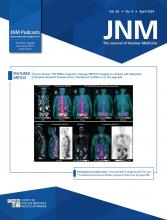Abstract
Recently introduced PET systems using silicon photomultipliers with digital readout (dPET) have an improved timing and spatial resolution, aiming at a better image quality, over conventional PET (cPET) systems. We prospectively evaluated the performance of a dPET system in patients with cancer, as compared to high-resolution (HR) cPET imaging. Methods: After a single FDG-injection, 66 patients underwent dPET (Vereos, Philips Healthcare) and cPET (Ingenuity TF, Philips Healthcare) imaging in a randomized order. We used HR-reconstructions (2x2x2 mm3 voxels) for both scanners and determined SUVmax, SUVmean, lesion-to-background ratio (LBR), metabolic tumor volume (MTV) and lesion diameter in up to 5 FDG-positive lesions per patient. Furthermore, we counted the number of visible and measurable lesions on each PET scan. Two nuclear medicine specialists blindly determined the Tumor Node Metastasis (TNM) score from both image sets in 30 patients referred for initial staging. For all 66 patients, these specialists separately and blindly evaluated image quality (4-point scale) and determined the scan preference. Results: We included 238 lesions that were visible and measurable on both PET scans. We found 37 additional lesions on dPET in 27 patients (41%), which were unmeasurable (n = 14) or invisible (n = 23) on cPET. SUVmean, SUVmax, LBR and MTV on cPET were 5.2±3.9 (mean±SD), 6.9±5.6, 5.0±3.6 and 2991±13251 mm3, respectively. On dPET SUVmean, SUVmax and LBR increased 24%, 23% and 27%, respectively (p<0.001) while MTV decreased 13% (p<0.001) compared to cPET. Visual analysis showed TNM upstaging with dPET in 13% of the patients (4/30). dPET images also scored higher in image quality (P = 0.003) and were visually preferred in the majority of cases (65%). Conclusion: Digital PET improved the detection of small lesions, upstaged the disease and images were visually preferred as compared to high-resolution conventional PET. More studies are necessary to confirm the superior diagnostic performance of digital PET.
- Image Reconstruction
- Instrumentation
- Oncology: Lung
- PET
- Conventional PET
- Digital PET
- FDG-PET
- cancer imaging
- lesion detection
- Copyright © 2020 by the Society of Nuclear Medicine and Molecular Imaging, Inc.







